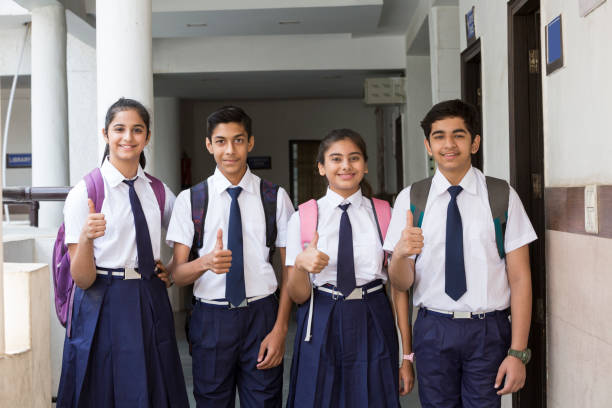Our civilized society has several metrics to gauge the social standing of a man or a woman. The biggest metric is the clothes that one wears. An affluent can easily be differentiated from an individual coming from the economically weak, based on clothes. Thus, a class divide exists in the way an individual drapes himself/herself/themselves. In an educational institute where the prime motive is to get educated and open the doors of knowledge, such a divide can be harmful. Thus, uniforms were introduced to mitigate the problem.
The uniforms ensure that certain equality is maintained within the confines of the institute. Uniforms negate the ‘status symbol’ and instil a sense of oneness amongst the students. In that way, it does not give a chance for bullies from richer backgrounds to discriminate and pick on the poor ones with regards to their clothing and as a result, they do not feel alienated.
Wearing a uniform reduces absenteeism and promotes school attendance. It ensures that students pay attention to their studies whilst instilling discipline, focus, and good behaviour. It gives an even playing field to the students, as well as their parents. The latter can buy the uniforms at the same price like anyone and ensure that their kids are at par with their peers.
Uniforms strengthen the social fabric
A majority of us have grown up in schools with strict uniform protocols. One could not have gauged if the classmate you were sharing the bench with came from a humble background or an extremely loaded one. Similarly, they may have not known that you came from a ‘not-so-privileged’ background.
In a sense, schools felt one. Everyone felt one. I remember having Muslim friends, both girls, and boys and them coming to the school, strictly adhering to the uniform. No one had any grudges that their religious identities were not allowed in the school.
Religion and clothes – two separate entities
For a major chunk of my childhood, religion and clothes were separate entities. Call it my privilege or the naivety of a child but those were the simpler times. However, it is the adults in a non-uniform world that are motivated to snatch away the uniformity of a school dress.
They want to strip the innocence of kids away and use them as a pawn of their big political games that revolve around the clothing style of individuals. Ever since the Burqa-Hijab controversy broke out in Karnataka, several videos have gone viral on the realms of social media platforms where Muslim parents could be seen arguing with school authorities to allow their Burqa-clad daughters to enter the school.
On my heydays, parents fought with authorities to allow their wards to be admitted to the school because they were late or they had worn the PT shoes instead of the black shoes, pre-ordained for the day. However, now, it is a fight for wearing a saffron scarf or Burqa.
Read more: True culprits behind the Hijab row are out
Why Burqa? The symbol of oppression
A simple question needs to be asked to the proponents of Burqa. Weren’t the wokes against the tyranny of patriarchy? It defeats the purpose when you hide behind the ‘choice of freedom argument’ to allow Muslim women to wear a piece of clothing that is nothing but the shining piece of toxic male patriarchy at its finest.
Hijab Row: a biological/anthropological take – A thread.
Evolution has been most unkind to women. It’s evolution that gave males the advantage that they currently enjoy. The physical size, muscle strength and same energy levels on all days of the month made man what he became.
— Atul Kumar Mishra (@TheAtulMishra) February 10, 2022
Weren’t Burqas and Hijabs allowed by the Prophet when the male gaze of outsiders fell upon his lady? Still, the Quran did not outrightly mention the term ‘Burqa’ and ‘Hijab. However, the gatekeepers of the religion, through centuries of power have managed to commodify Muslim women.
Thus, by allowing Burqa, the old stereotype that women are the property of men and need to be protected from outside gaze is perpetuated. It begets the question. Where exactly is freedom?
Read More: Is Hijab actually liberating? An Anthropological and Genealogical take
The upshot is that burqa is a symbol of male oppression and yet some are adamant to push it as a matter of choice. It is a dichotomy of evolution. Educational institutes are supposed to be safe spaces where one can come from any background or religion and assimilate seamlessly. Bringing Burqa or Hijab in these institutions defies the fabric of the place where teaching, just defies the purpose of uniformity in education.
